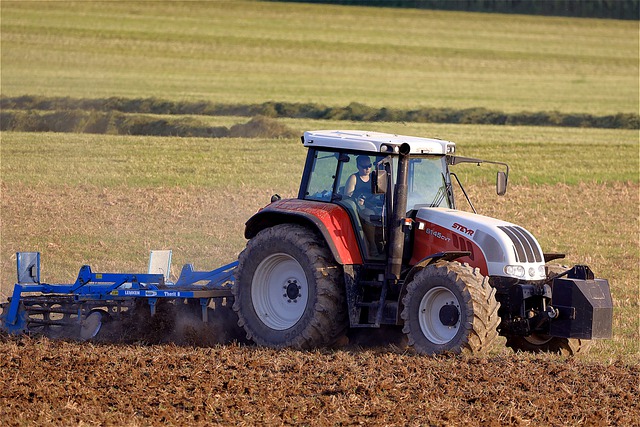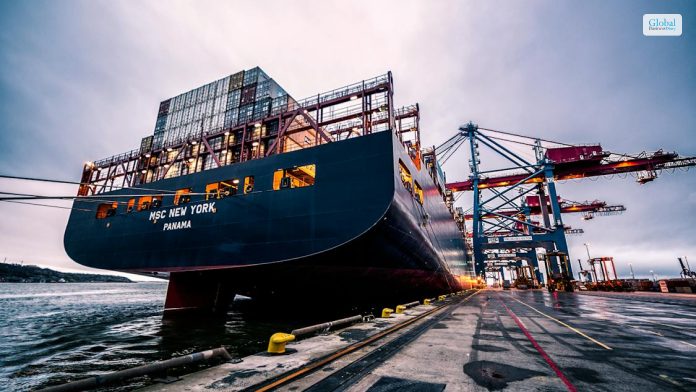Which Entrepreneur Made Tractors Before Entering The Sports Car Business?

Do you want to hear an exciting story of a tractor maker becoming a sports car business owner? It can help you understand that innovation is no one personal property but a talent you need to showcase to the world.
There are several incidents and inspiring stories in the business world that you would love to hear. However, these are not just stories rather real-life events that need your attention to read patiently at your end. There are different types of marketing but Lamborghini does not need any one of them.
And while we are talking about legends who made history, how can we not mention the GT7 Legend? Don’t forget to check it out as well! Moving on, I will share the most inspiring story of an entrepreneur who has to make things happen in his favor. Starting from zero, he has become a hero in his journey of life.
Which Entrepreneur Made Tractors Before Entering The Sports Car Business?
Ferrucio Lamborgini made the tractors before he pondered his way to the sports car business. In my article, you will get the answer to which entrepreneur made tractors before entering the sports car business.
The real-life story of this entrepreneur is quite exciting and impressive for many upcoming generations of the world aspiring to become the next generation of entrepreneurs. So build up your data that can work well in your favor.
The Roots Ferruccio Lamborghini
Ferrucio Lamborgini was born in 1916 at the time of world war 1. He is among one of the most eminent personalities of the world who have created wonders and magic in his lifetime.
You cannot just explain his stories only using mere words; instead, you must understand the mentality to achieve your goals.
His parents were viticulturists, and they have a firm where they can quickly free the grapes and the wine. So today, the world knows about Lamborghini and high-end sports cars all over the world.
So in Laborgini’s life, the family business has played a very crucial role. Let’s dig deeper into the Story to get a better understanding of it.
He grew up under a farming lifestyle. More importantly, as agricultural machinery. He developed a strong passion and enthusiasm. It has been Fratelli Taddia Institute near Bologna where Lamborghini has completed his study on mechanics.
Which Entrepreneur made tractors before starting the sports car business? Will no longer be a matter of doubt to you.
During his studies, Lamborghini worked as an intern in the workshop. Things have changed rapidly after world war II as Lamborghini ended up getting a job in the Italian Royal Airforce as a mechanic in 1943. Which entrepreneur made tractors before entering the sports car business?
After the rigorous 4 years of conflict, Italians have decided that they do not want to fight anymore.
When the British took control of the Rhodes, then Lamborghini was captured by the British Army and he was given the task to work on the automobiles. After that incident, he had returned to Italy.
In his first attempt, he started producing and selling the tractors. After that soon other ventures followed a lot. It includes the design, manufacture of the air condition of the heating system.
After he received success in his life,e he began buying luxurious cars for himself. At this point in time, he had driven a Ferrari For the First time. He was known as a great mechanic and was also said to be a bad driver.
A Journey Towards Glory: First Sports Car Of Ferruccio Lamborghini
Do you want to witness the journey of Ferruccio Lamborghini’s first sports cat that has created a history in the automobile industry? If yes, then do not leave my article in a mid-way to the interesting real-life story of this man. After the end of the devastating Second world war, he had opened a carport in the Pieve di Cento.
The most interesting part of his life story now begins from here when his first attractive sports car took part in 1948’s Mile Miglea open this was an open street car racing championship.
It was a simple vehicle but Lamborghini has turned this two-seater simple car in a 750cc racing car. Unfortunately, he had smashed the car in the accident on the sidewall of the street side hotel and lost the competition. Still, it paves the way for the new era of sports cars by holding the hands of the best car maker. In 1963, he has designed his first sports car Lamborghini 350 GTV.
Life-Changing Incident Of Lamborghini & Birth Of Lamborghini Sports Car
Lamborghini has owned the 250GT Ferrari where he has observed that there are numerous issues regarding the technicalities associated with this car. He reported this fact to Enzo Ferrari, the owner of Ferrari Sportscar.
Thus, two exotic car makers have disputes among them that made Lamborghini bravely decide to start their own auto company.
Lamborghini Started His Journey As A tractor Maker
Lamborghini’s first tractor was built on the market in 1948 and was named Carioca. He decided to make the tractors cheap and sell them cheap; on the market. The best things about his tractors were they were small and powerful.
There are very few businesses that make more profit in a short time span like Lamborghini.
He could sell his tractor at a reasonable price as the mechanical parts are easily affordable and accessible. Due to its cost-effectiveness, Lamborghini stood out in the market.
This is one of the most outstanding, achievements of this person on whom you can make your bet in the right direction.
It was not just a dream car of many car lovers of the world, but an iconic legacy that carmakers will remember in the upcoming decades.
However, the journey was not that simple as it sounds, as there were many turmoils in the pathway.
Journey Of The Sports Car Lamborghini
Armed with full confidence, Lamborghini has started manufacturing the Lamborghini car after being motivated to produce the best sports car of the century.
He has begun creating the best sports car of the century to make it the best one for all the sports car lovers of the world. His car was named, wronged after the bulls.
One of the most exciting facts about Lamborghini is that his business quickly took off in a short period.
He has never advertised his sports car in the market for its promotion, but still, the performance and style of the car have attracted many buyers towards it.
People have started buying this car with so much enthusiasm that this car has become iconic in nature within a short time span. Volkswagen, in the late 1990s, purchased this car. It is one of the best Sports cars to have with you right now.
This story of the legendary car maker is quite inspiring to many new generation car makers of the world.
Final Take Away
Hence, from now on, you may not have the confusion of which entrepreneur made tractors before entering the sports car business? Lamborghini is not just a sports car but a well-dreamt legacy that no car maker of the world could ever forget in his lifetime.
Proper planning can make things easier and effective for your business to enjoy this place that can work well in each aspect. If you have any opinions, anything more than this, I have shared with you. Feel free to communicate with us.
Read Also:















